What Shape Is The Earth? Facts About The Earth's Rotation
♦ What Is The Highest Peak On Earth? The Answer Is Not Everest
♦ Why Does the Moon Affect the Tides Though It is 384,000 KM from Earth
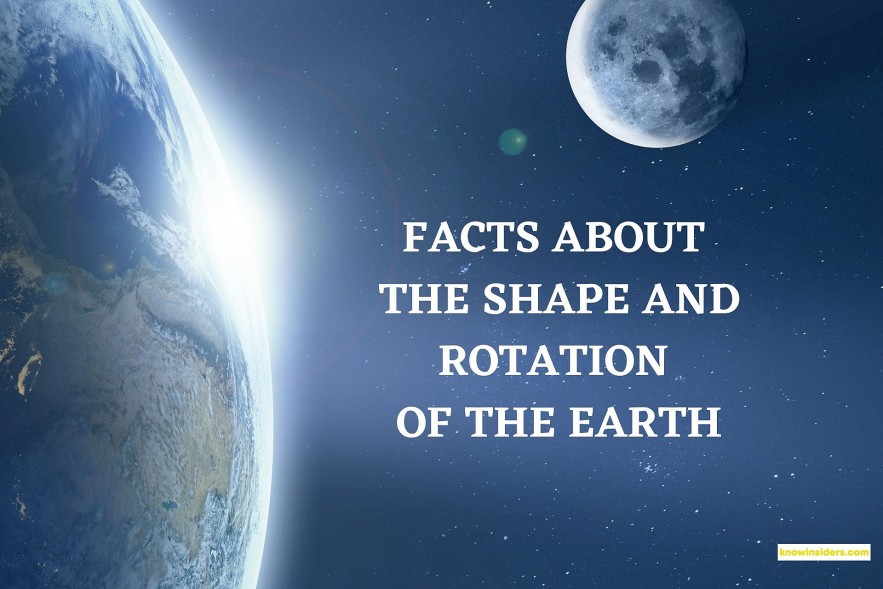 |
| What Shape Is The Earth? Facts About The Earth's Rotation. Photo KnowInsiders |
| Contents |
The Earth is a familiar planet but there are still many mysteries for us to discover. Hopefully the information we have provided in this article will help you answer several questions about the Earth.
Is the Earth round or flat?
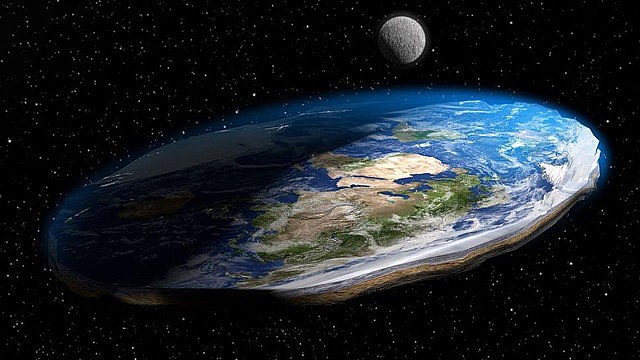 |
| It was believed that the Earth is flat |
‘What is the shape of the Earth’ is not a new question. This has been the question raised many years ago. There have been many theories predicting the shape of the Earth. Astronomers previously thought that our planet was a flat plane.
And on that plane, people can move and not fall out of the universe. However, is this really true? It was later pointed out that the Earth is round like an orange. Only when the planet is round can round shadows be created.
| Is the Earth flat? Short answer is no (of course!). But how do we know that? Surprisingly, there are still people who try and argue the Earth is flat, based particularly on things like not being able to see a curved horizon from the shore. |
If the Earth is not flat, why don't people and animals fall off the surface?
If not flat, what shape is the Earth?
It was not until Colombo discovered the Americas and Magellan made his circumnavigation that mankind began to believe that the Earth was not flat as it was thought. The true shape of the Earth has only been precisely determined in the present era.
Thanks to space satellites and algorithms, it is possible to prove the true shape of the planet. The Earth is not round, nor is it an ellipse or an orange or a melon.
READ MORE: Where is the Coldest Place on Earth - According to NASA Satellite
| What shape is the Earth? It is a slightly elongated spherical planet. The Earth is compressed along the direction from the poles to the equator. The planet is flattened at the North and South poles. Thanks to gravity, we don't fall off the surface of the Earth. |
How many kilometers does it take to go around the Earth?
The Earth is inhabited by billions of people and species of animals and plants. In spite of not being the largest planet in the solar system, the Earth is still large enough to overwhelm everyone. What is the diameter of the Earth?
The Earth is not a perfect sphere. Its surface has convex (hills) and concave (valleys in the oceans). Therefore, the radius of the Earth has no standard value. Scientists calculate that the distance from the center of the Earth's core to the outermost surface is about 6,353 - 6,384km.
6,371km is the average radius of the planet. The answer given to the question ‘What is the Earth’s diameter’ is 12,742km.
Secrets about Equator
 |
| The circle surrounding and passing through the diameter of the Earth is known as the Equator. |
What is Equator?
The circle surrounding and passing through the diameter of the Earth is known as the Equator. This is an imaginary circle that scientists "draw" on the surface of the earth. The Equator divides the Earth into two halves of the Northern Hemisphere and the Southern Hemisphere.
The equator is a special parallel
The latitude of the Equator is 0 degree. The Equator is the longest parallel of latitude. The estimated length of the Equator is 40,075km (about 24,901.5 miles). You need to go through a distance of 40,075km (24.3 times the length from North to South of our country) to travel around the Earth.
According to astronomers' observations, at the Equator, the Sun crosses this latitude twice a year. It is the spring and autumn equinoxes of each hemisphere. That period falls between March 20/21/22 and September 21/22/23 every year. The Sun will shine perpendicular to the Earth as it crosses the Equator at this time.
Also at the Equator, the seasonal variation and difference between day and night is minimal. It only fluctuates for a few minutes throughout the year. Therefore, the further away the places are from the Equator, the greater the difference between the time of day and night between the different seasons.
READ MORE: What is A 'super-Earth' - New Discovery About 'Signs of Life'
How does the Earth rotate?
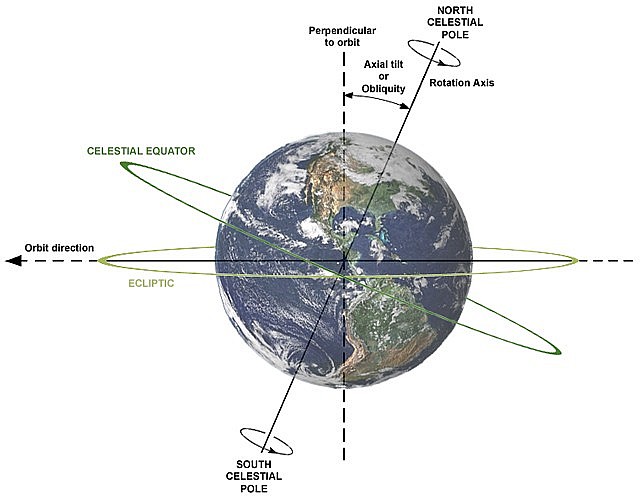 |
You will need to pay attention to the two main movements of the planet. It is the rotation of the earth on its axis and orbit around the Sun.
| Do you know...? Scientists use the movement of pendulums to provide evidence that the Earth is rotating. A pendulum is a weight hanging from a fixed point so that it can swing freely back and forth. When you move the base of the pendulum, the weight continues to travel in the same path. |
How long does it take for the Earth to rotate on its axis?
This is a special phenomenon of the Earth's rotation. Our planet rotates from West to East. Isn't it surprising, because we all know that the sun rises from east to west. Why is the rotation of the Earth opposite?
According to observations from the North Pole, the motion of the Earth and Moon rotates around their own axis in an anti-clockwise direction. The axis of the globe is tilted at an angle of about 23.5 degrees relative to the line perpendicular to the planes of the Earth and the Sun. The Moon-Earth plane is tilted about 5 degrees to the plane between the Earth and the Sun.
What if this inclination did not exist?That is the fact that every 2 weeks we will have a solar eclipse and a lunar eclipse. The Earth takes about 24 hours relative to the Sun (and about 23h56'4″ relative to the stars) to rotate on its axis. However, this period is slowing down. This is why the date in the past will be shorter than the date in the future. Measurements have shown that, today, a day on Earth is about 1.7 milliseconds slower than it was a century ago. |
What force makes the earth rotate on its own axis? Could its rotation ever slow down?
Let's take a look at explantions of some scientists
Brendan O'Brien, Watford UKAt the centre of the earth is a huge ball of liquid iron. It is always spinning and causes the earth to spin with it. Every few million/billion years the iron core shifts its direction of spin. When it does, the entire eco-system could be wiped out (if it's a big enough shift). Mega tsunamis, total change of weather systems, etc. Antartica could end up in the tropics. |
| Johnathan Wilkinson, Surabaya, Indonesia No force is needed because there is no resistive force trying to slow the earth down, so in a sense it rotates now because it rotated before: angular momentum. To a good approximation, the planets and sun exert zero rotational (as opposed to linear gravitational) forces on each other. However, there are subtle couplings related to deformations of the planets, which is why for example the moon rotates so that one hemisphere is always visible from earth. By a similar mechanism the earth's rate of rotation could also change. |
Tom Boddington, Leeds, UKAnother factor is the earth's "moment of inertia", a concept like mass but related to rotations rather than linear motion. Try this: spin round on a swivel chair, then spread out your arms and you will notice that your rotation slows. Bring your arms in and the rotation will speed up again. With your arms outspread, you have more mass at a distance from your axis of rotation, so your moment of intertia increases. Now angular momentum = moment of intertia x speed of rotation, but this quantity is conserved (if we ignore the friction that eventually stops the chair spinning), so your speed of rotation must drop. If the earth became more oblique or if geological events redistributed its dense iron core to shallower depths, then the earth would rotate more slowly. |
How long does it take for the Earth to revolve around the Sun?
 |
| The Earth takes 365 days and 6 hours to go around the Sun |
Our Earth rotates around the Sun from West to East. This orbit is a nearly circular ellipse.
Scientists calculate the time it takes Earth to orbit the Sun to be about 365.2564 days (365 days and 6 hours). People usually round to 365 days a year. The amount of time left over each year will be added to and counted in a leap year of 366 days. This leap year repeats every 4 years.
While making its orbit around the Sun, the Earth maintains an inclination of 66o33′ and does not change its tilt in the plane of its orbit.
How many time zones on Earth?
There are 24 time zones on Earth.
The globe is divided into time zones to help us account for the movement of the sun’s light across the globe. This way 9:00 am is morning everywhere. Otherwise, 9:00 am would be morning for you but night somewhere else — it would get confusing.
Surprising facts about the Earth that no geography books will tell you
The Moon is part of the Earth
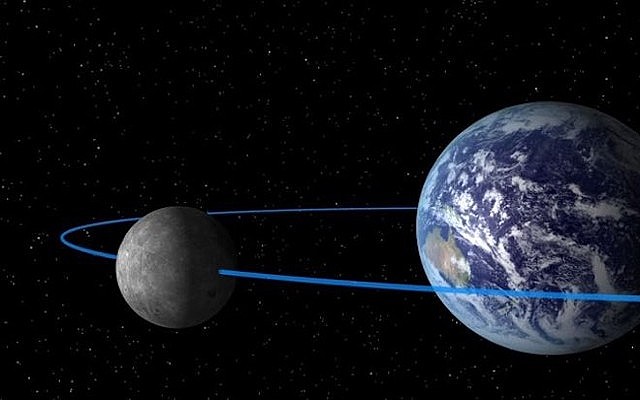 |
| Scientists believe that the Moon is a split from the Earth |
Scientists believe that the Moon is a split from the Earth. It could be the result of a collision between the Earth and a comet or planet. It causes part of the globe to be separated into space.
After the formation process, that fragment formed the present Moon. This explains why the rock structure of the Moon has many similarities with the Earth.
Earth's magnetic field is changing
Many studies show that from the 19th century, the Earth's magnetic field began to move from the Southern Hemisphere to the Southern Ocean. Increasingly, the speed of the magnetic field moves faster and faster until it reaches its maximum speed.
Could a day on Earth be 25 hours?This is entirely possible when the speed of the Earth's rotation is slowing down. It is predicted that about 140 million years from now, humans will have a 25-hour day instead of the current 24. |
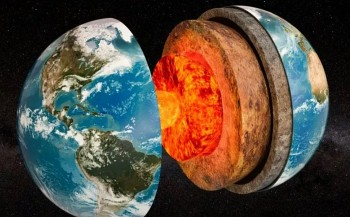 Where is the Hottest Part of the Earth and How Hot is It? Where is the Hottest Part of the Earth and How Hot is It? Our beautiful and mysterious Earth is divided into many parts, many layers including surface, crust and core. So where is the hottest part of the ... |
 Top 8 Mysterious Places That Still Exist on Earth Today Top 8 Mysterious Places That Still Exist on Earth Today There are some places in the world that make us curious to know why they exist and how mysterious they are. Check out Top 8 ... |
 Facts About The Existence of Giants On Earth Facts About The Existence of Giants On Earth It seems that we only hear about the giants through myths. However, more discoveries of fossils and remains of giants show that the giants do ... |
























